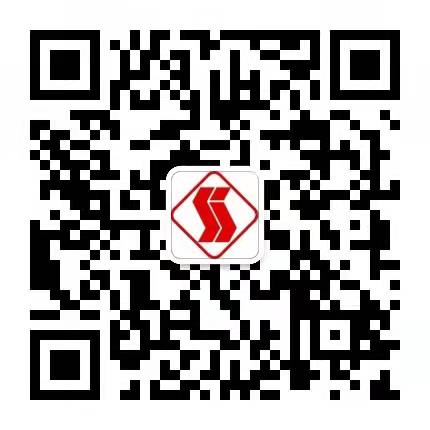Model: SBWR-2160 SBWR-2260 SBWR-2360 SBWR-2860
Graduation: E, K, S, N
Wiring: 2 - wire system, 3 - wire system, 4- wire system
Ambient temperature: < 0.05 / 1 °C
SBWR-2160 SBWR-2260 SBWR-2360 SBWR-2860 Temperature transmitter
Overview of SBWR-2160 SBWR-2260 SBWR-2360 SBWR-2860 Temperature transmitter
Power input and signal output, it transforms signal of industrial thermocouple & thermal resistance into output signal of 4~20mA which is in linear relation with input signal or temperature signal.
The transmitter could be directly mounted inside junction box of thermocouple & thermal resistance to form an integral structure. As temperature - measuring instrument of new generation, it could be widely used in metallurgy, petroleum chemical, power Light industry, textile, foodstuff, national defense, and scientific research field, etc.
Working principle
SBWR-2160 SBWR-2260 SBWR-2360 SBWR-2860 Temperature transmitter is composed of measuring range unit and amplification unit. The range stepping element is composed of a circuit board composed of an input circuit and a feedback circuit. The range units are different due to different input signals. There are three range units matching the three input modes of DC millivolt, thermocouple and thermal resistance, and the amplification unit is common to the three inputs.
The DC millivolt signal can be provided by any sensor or sensitive element. The DC millivolt measuring range unit is relatively simple. Before amplifying the DC millivolt signal by 5 times, there is a tuning circuit so that when the input signal UI = 0, the output signal uo = 1V (specified in the standard signal protocol). In order to meet this requirement, a feedback circuit is also designed, Make the output voltage uo have a definite relationship with the feedback voltage UF: uo = 5uF The zero adjustment potentiometer W1 and feedback potentiometer WF need to be adjusted repeatedly to meet the requirements of degree. The thermoelectric potential measuring unit must have the functions of cold end compensation and linearization. The bridge method for cold end compensation is basically the same as the above. The linearization function is because the change relationship between thermoelectric potential and temperature is nonlinear. A negative feedback circuit is designed to make it have broken line characteristics. The slope of each broken line is different, but it can be approximately regarded as a curve, so that the closed-loop magnification changes in a curve with the size of input thermoelectric potential, which basically offsets the nonlinearity of thermocouple, and the output voltage is basically proportional to temperature.
Features of SBWR-2160 SBWR-2260 SBWR-2360 SBWR-2860 Temperature transmitter
•Silica rubber sealing structure, shock & moisture - proof, suitable with bad environment
• Field installed inside junction box of thermocouple & thermal resistance, output signal is 4~20mA; it could save expensive cost on compensational wire and improve interference - resistant performance during long -distance signal transmission process
• thermocouple temperature transmitter has automatic temperature compensation function at cold end.
• High accuracy and lower power consumption, wide temperature range, stable and reliable
•Wide application, it could be installed on the spot with thermocouple or thermal resistance to form integral structure, or installed in testing device •Smart temp transmitter can be equipped with ZBT communication equipment, a set of 386 or more advanced PC, to set model & scale number of transmitter, as well as temperature range..
•Digital display type temp transmitter it can adjust the display direction of the transmitter according requirements
Main tech data of SBWR-2160 SBWR-2260 SBWR-2360 SBWR-2860 Temperature transmitter
Input: Thermocouple (K E J B S T N), Thermal Resistance (Pt100, Cu100, Cu50) (3 wire System or 4 wire system)
Output : Output direct signal from 4 to 20mA within range, which is in linear with the millivolt signal input by thermocouple, or in linear with the resistance signal input by thermal resistor, or in linear with temperature signals.
Isolated temperature transmitter: the input is separated from output and separation voltage is 0.5Kv. It improves common mode interference - resisting performance and is more suitable for computer network.Basic Error: ± 0.5% FS
Wiring: 2 - wire system, 3 - wire system, 4- wire system
Display: 4 digits LCD of temperature on the spot, and displayed in in open circuit.
Power: The lowest voltage of transmitter is 12V, highest voltage is 35V, and the rated voltage is 24V.
Load: The limit load resistance is calculated as follows: R1 (max), 50 (Vmin-12) (24V when the load resistance in the range of 0-600。choose to use) the rated load 250。
Ambient temperature: < 0.05 / 1 °C
Model | SBWR | R thermocouple |
Output nature | 2 | output and the corresponding temperature is linear8) N Ni-Cr-Si nickel-silicon |
Sensor | 1 | E nickel chromium - copper-nickel |
2 | K, nickel-chromium - nickel. silion | |
3 | S platinum rhodium - platinum | |
8 | N Ni-Cr-Si nickel-silicon | |
Circuit class | 6 | Non-isolated |
Device categories | 0 | Conventional |
Model | Graduation | Maximum Range |
SBWR-2160 | E | 0-400 0-600 |
SBWR-2260 | K | 0-400 0-600 0-800 0-1000 |
SBWR-2360 | S | 600-1600 |
SBWR-2860 | N | 0-400 0-600 0-800 0-1100 0-1200 |
Note: Any special design or question of SBWR-2160 SBWR-2260 SBWR-2360 SBWR-2860 Temperature transmitter, kindly contact the manufacturer for more details.
Contact: Andrew Zhang
Phone: 0086-18116465407
E-mail: sales@shanghai-automation.com
Whatsapp:
Add: No.191West Guangzhong Road, Shanghai,P. R.of China 200072
We chat
